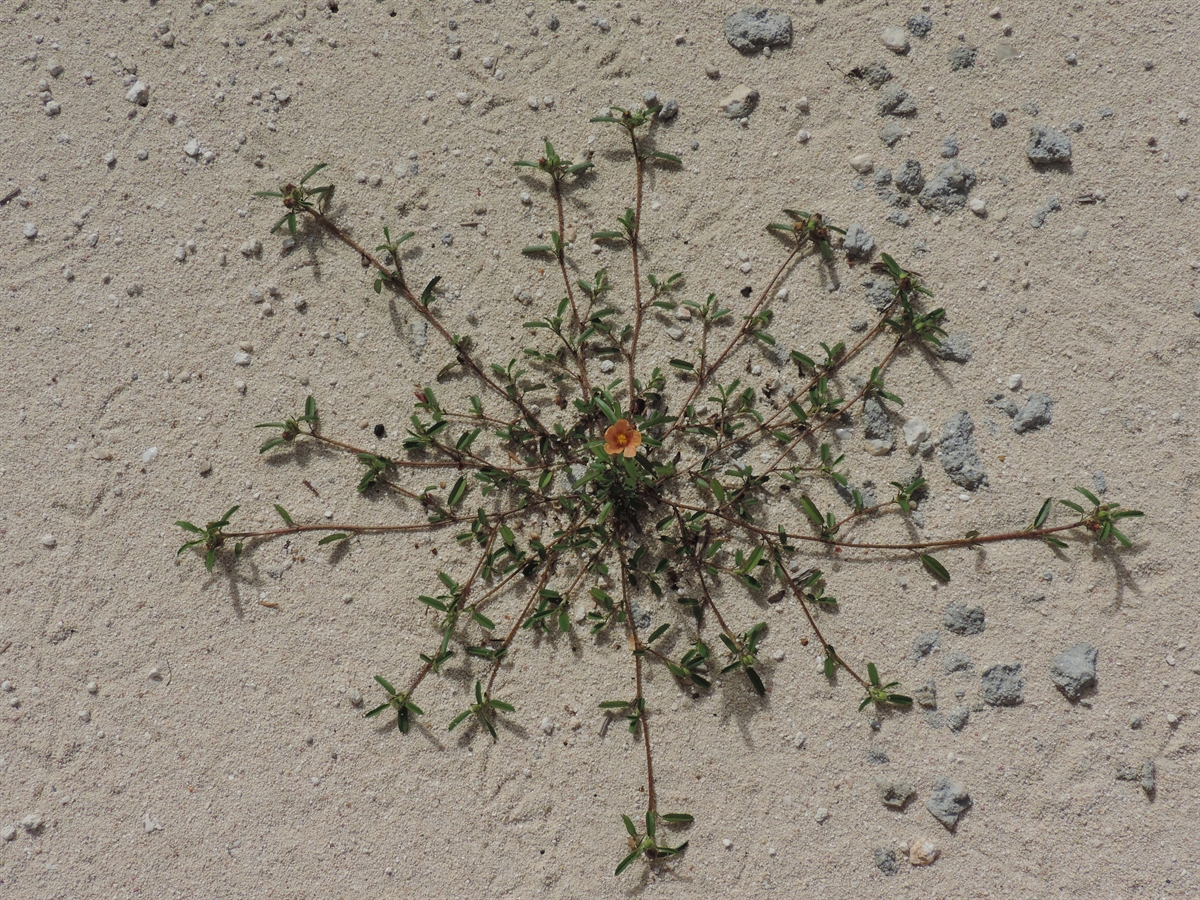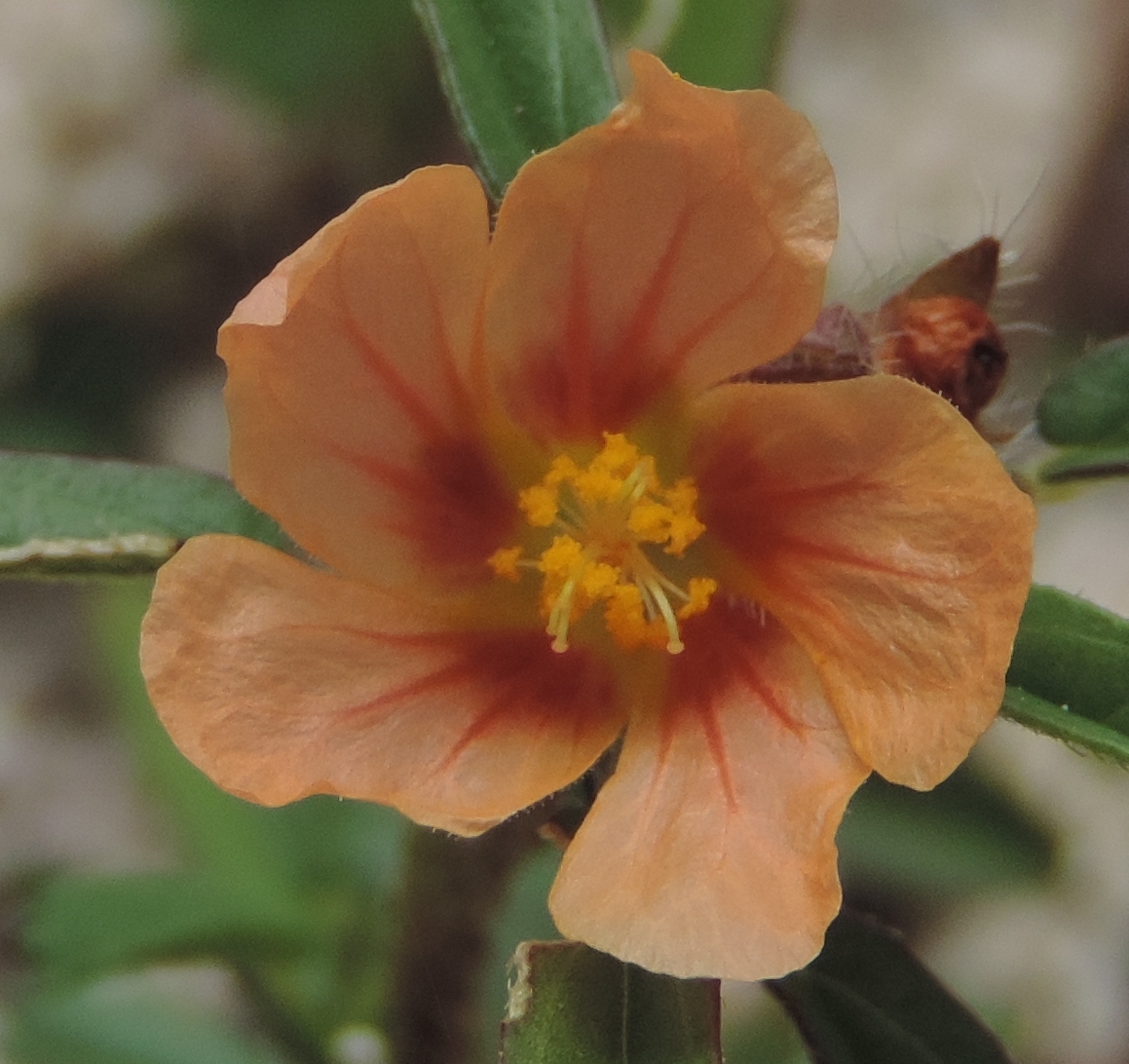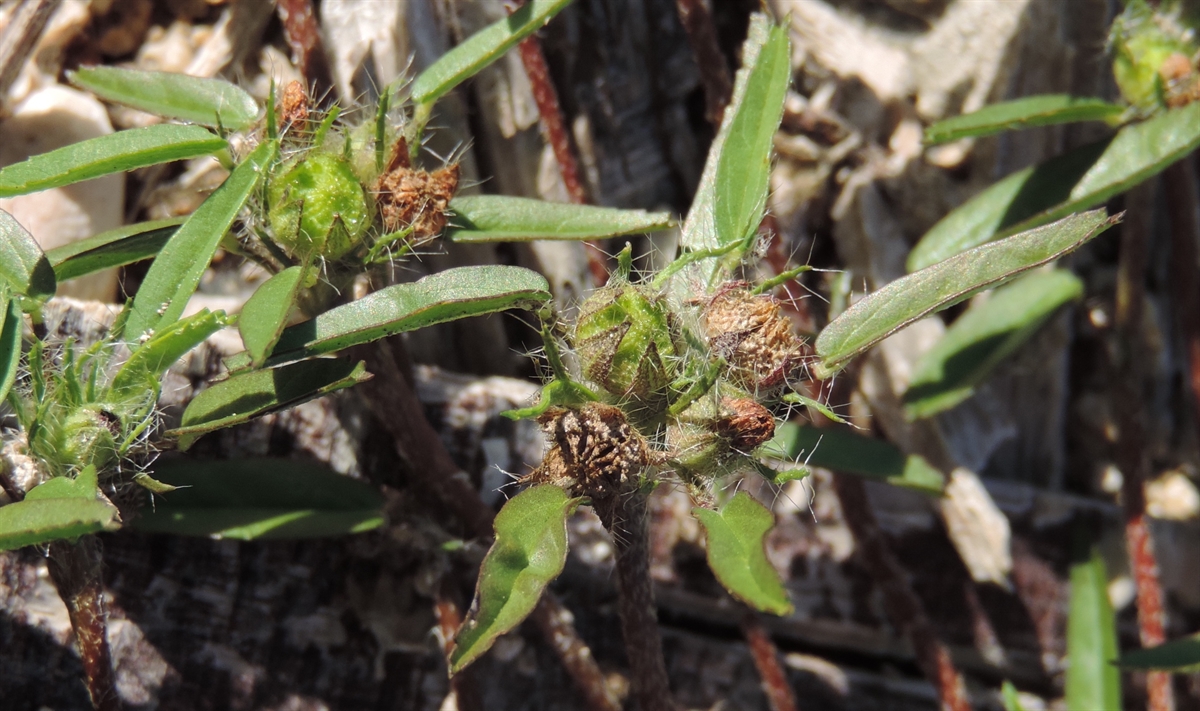Habit: Sida ciliaris grows as a spreading, perennial herb. The leaves are arranged alternately, elliptic, to 2 cm in length, toothed margin towards the acute leaf apex. There are stipules. The leaves have abaxial stellate pubescence.
The complete, perfect, actinomorphic flowers are crowed at branch tips. The calyx has 5 half fused pubescent green sepals. The corolla has 5 half fused pink to red-orange petals with red at the base of the petal. There are numerous stamens fused together around the style in a column. The ovary is superior with numerous locules and numerous seeds. The fruit is a numerous locule loculicidal capsule covered in small bumps
Habitat: Sida ciliaris grows in sandy Human Altered environments (yards, roadsides/abandoned fields).
Distribution: Sida ciliaris occurs on all island groupings in the Lucayan Archipelago, The Caribbean, Mexico, Central and South America as well as parts of the southern United States. It has become an invasive species in the Galapagos and the Philippines.
Medicinal/Cultural/Economic usage: Sida ciliaris is not known to be used medicinally in the Lucayan Archipelago.


